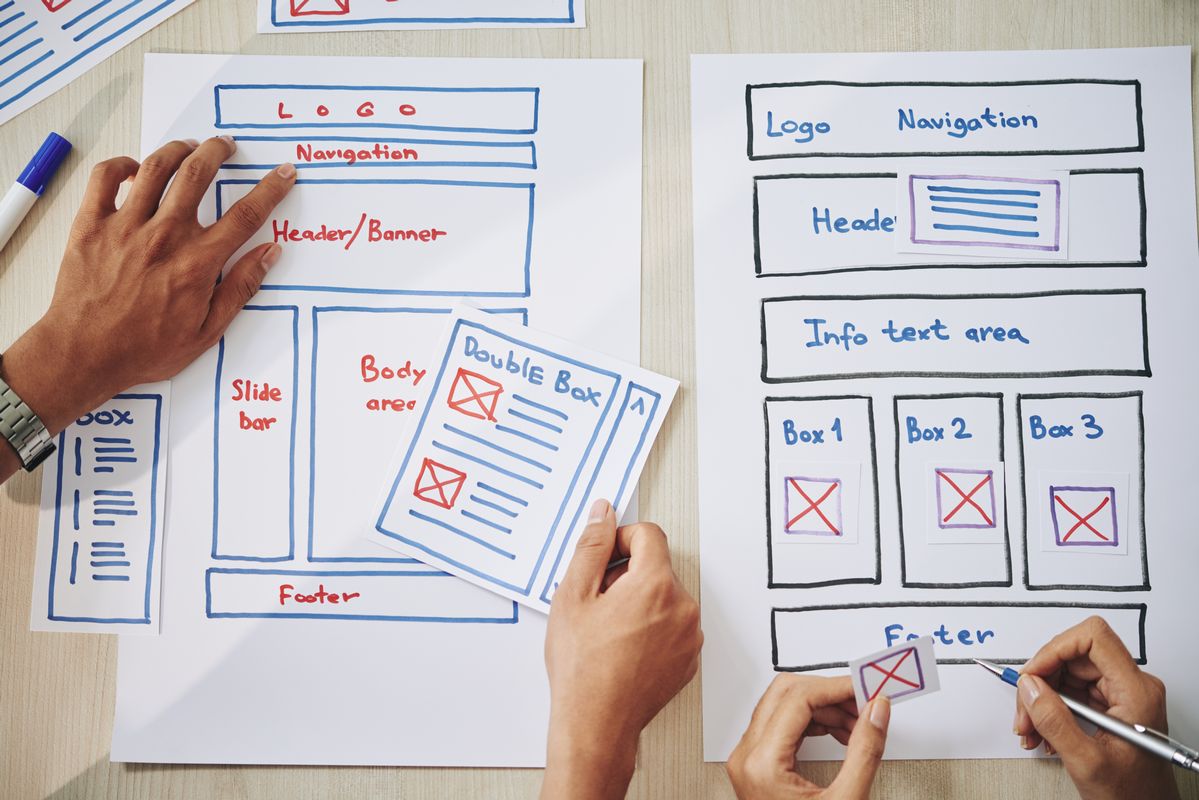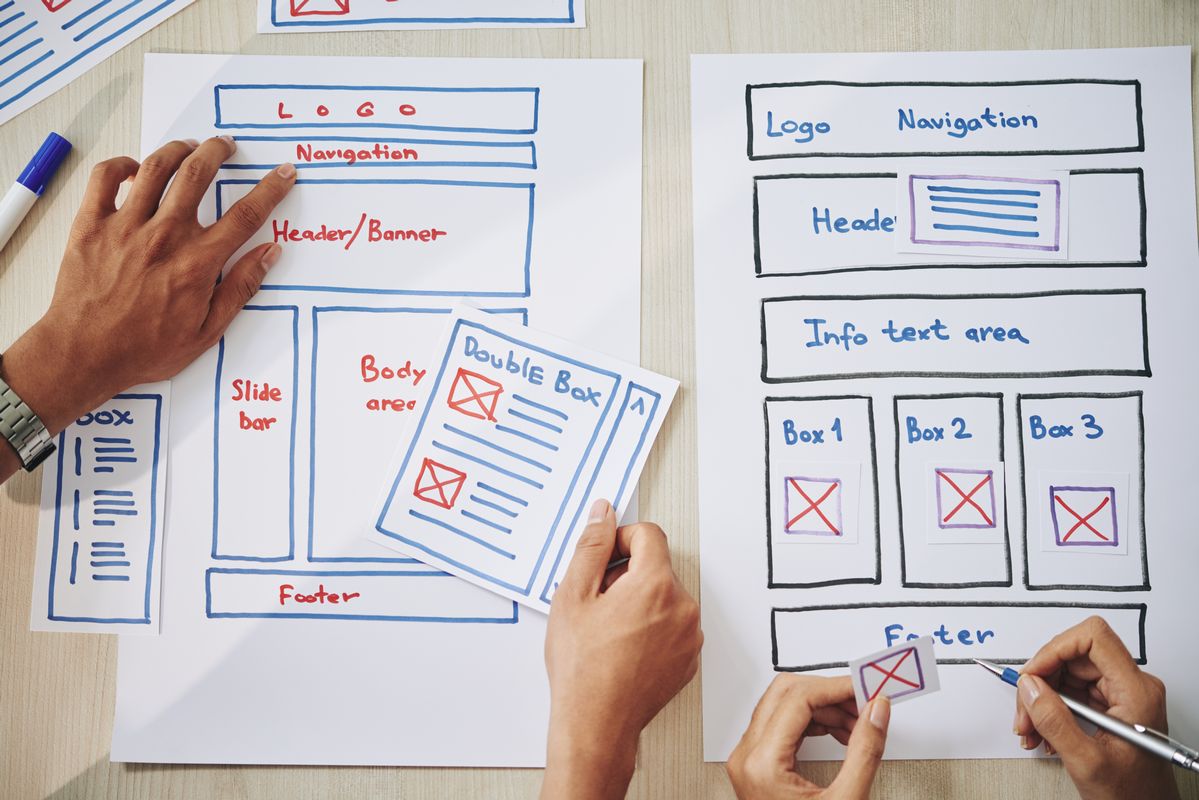The Increasing Importance of User Experience Design
As we advance into the new digital era, user experience (UX) design has never been more crucial. It's the context in which we view and interact with digital technologies, shaping our understanding and perceptions of apps, websites, and more. Good design is now a prerequisite, not a luxury. In fact, research shows that 38% of users will stop interacting with a website if the design is unappealing. Therefore, businesses must prioritize UX design to reap its numerous benefits.
UX design has become a significant factor in a product's success, and an ineffective design can lead to losses. Not only does it impact conversion rates and customer loyalty, but also the overall brand reputation. Every interaction a user has with your product or service can influence their overall impression of your business. Thus, creating a positive UX can significantly enhance your brand image and foster more reliable and long-term relationships with your customers.
Fulfilling the Rising User Expectations
The digital landscape in 2024 is undoubtedly more complex than ever, and users' expectations are higher too. Users now anticipate apps and websites to not only function correctly and quickly but to also deliver a seamless and enjoyable experience. They are looking for clear, consistent, and intuitive design that effectively solves their problems and satisfies their needs.
A successful UX design treats the user as the center of the design process, ensuring their needs and wants are met. This extends from the initial design stages, including user research and usability testing, to continuous iteration and improvement based on user feedback. Overlooking these steps may result in a product that is misaligned with user expectations and thus fails to meet its goals.
UX Design as a Competitive Advantage
In today's saturated digital market, businesses cannot rely solely on unique products or low prices as their competitive advantage. They need to deliver a superior user experience that makes them stand out. Good UX design promotes customer satisfaction and loyalty by improving the usability, accessibility, and desirability provided in the interaction with a product.
Moreover, investing in UX can also result in higher conversion rates, lower churn rates, reduced cost of customer acquisition, and increased market share. For example, a well-designed user interface could increase a website's conversion rate by up to 200%. As such, UX design isn't just about creating a pretty interface; it's about understanding users' needs, meeting expectations, and providing value. In 2024, it will become a strategic priority for businesses to leverage UX design, not just in their digital products but in every interaction a customer has with their brand.

Implications of Poor UX Design
While the advantages of good UX design are abundant, the ramifications of poor UX design can be impactful and significant. A poor user experience can lead to user frustration, loss of potential customers, and damage to brand reputation. According to studies, 88% of online consumers are less likely to return to a site after a bad user experience. Furthermore, users who encounter issues with website performance, such as slow loading times or difficulty in navigating the site, are likely to leave and look for alternative solutions. A bad user experience can also decrease a site's visibility in search engines because the ranking algorithms of platforms like Google take into consideration the amount of time users spend on a site.
The Future of UX Design
UX design has evolved dramatically over the years and will continue to do so in the future. Emerging technologies like artificial intelligence, augmented reality, and virtual reality are creating new opportunities and challenges in UX design. These technologies provide the potential for more immersive, personalized, and user-centered experiences. For instance, with the help of machine learning and AI, systems can analyze user behavior and automate personalization, thus enhancing user satisfaction. However, incorporating these technologies into UX design requires proper understanding and thoughtful implementation to ensure that they genuinely improve the user experience rather than complicate it. The future of UX design will revolve around creating seamless symbiosis between human users and the ever-evolving digital landscape.
The Role of UX Design in Business Growth
UX design plays a fundamental role in business growth and is now considered a key element of business strategy. Good UX design can lead to higher customer satisfaction, increased user engagement, and improved customer loyalty, all of which can contribute to revenue growth. Moreover, the role of UX design extends beyond the digital product itself. It can shape the entire customer journey, affecting how customers perceive and interact with a brand across multiple touchpoints. From the design of the company's website and product interfaces to the clarity of billing processes and the efficiency of customer service interactions, UX design influences virtually every aspect of a business. Therefore, any business seeking sustainable growth must emphasize on refining their UX design.

The Importance of Usability Testing in UX Design
Usability testing is a crucial part of UX design. This process involves observing users while they interact with a product to identify any issues that could interfere with the user’s experience. Effectively addressing these issues can significantly enhance the overall user experience. Additionally, usability testing can help to reveal how intuitive and user-friendly a design is, indicating whether or not users can easily navigate through the product without confusion. Any complications encountered during testing can provide valuable insight into areas that require improvement. Ignoring this step in UX design could result in a product that frustrates users and turns them away from the product or, in some cases, even the brand. Therefore, businesses must incorporate usability testing as part of their regular design processes to ensure that their products provide a seamless user experience.
The Intersection of UX Design and Customer Satisfaction
The overall user experience has a significant impact on customer satisfaction. A well-executed UX design can turn a one-time user into a loyal customer, significantly boosting business growth. On the other hand, a poorly designed user experience can lead to unsatisfied customers, resulting in a damaged brand image and reduced customer base. The importance of UX design in customer satisfaction cannot be overstated. It's not just about ensuring that the product is functional, but also about making sure it's easy to use, aesthetically pleasing, and enjoyable for the user. In delivering such an experience, businesses can build a strong rapport with their customers, encouraging loyalty and fostering long-term customer-business relationships.
The Necessity of Ongoing UX Design Improvements
UX design is not a one-and-done process. Rather, it is a continually evolving discipline that requires ongoing adjustments and improvements. As the digital landscape changes and user expectations rise, businesses must keep their UX designs updated and in alignment with user needs. This requires businesses to actively seek and accept user feedback, being responsive to any issues users face and resolving them timely. Implementing regular updates in line with user demands can not only help businesses stay competitive but also promote continued user satisfaction. Even small changes can create a significant positive impact on the user's experience. Therefore, businesses need to view UX design as a long-term commitment and proactively work towards enhancing it over time.
| Aspect of UX Design | Reason for Significance | Impact of Good UX | Impact of Poor UX | UX Design in Future |
|---|---|---|---|---|
| User Expectations | Users now anticipate seamless and enjoyable experiences. | Create reliable and long-term relationships with customers. | Loss of potential customers, damaged brand reputation. | More immersive, personalized experiences powered by technologies like AI. |
| Competitive Advantage | Unique products or low prices are not enough to stand out. | Higher conversion rates, lower churn rates, reduced customer acquisition costs. | Lower customer retention and decreased site visibility. | UX design will become a strategic priority in every customer interaction. |
| Business Growth | UX design is a key element of business strategy. | Increase in customer satisfaction, user engagement and customer loyalty. | Frustrated users leading to decrease in customer base. | UX design can shape the entire customer journey, influencing all touchpoints. |
| Usability Testing | Crucial part of UX design to test user interactions with a product. | Enhanced overall user experience and intuitiveness of design. | Product that frustrates users and pushes them away from the product or brand. | Insights from usability testing will continue to drive UX improvements. |
| Customer Satisfaction | A major factor in building a strong brand and loyalty. | Turns a one-time user into a loyal customer, boosting business growth. | Unsatisfied customers resulting to damaged brand image and reduced customer base. | UX design will become more pivotal in ensuring customer satisfaction. |
Integrating UX Design in the Business Model
In today's digital era, where competition continually increases, integrating UX design in the business model is fundamental for a company's success. A seamless UX design takes into account the user's needs, expectations, and behaviors, which are crucial for the creation of a product or service that truly resonates with them. It respects the user's time and aims to provide immediate value, thus increasing user satisfaction and loyalty. Furthermore, a remarkable user experience translates into a positive perception of the brand, fostering trust and credibility. Therefore, businesses must consistently strive for exceptional UX design as part of their growth strategy.
The Impact of UX Design on Customer Retention
In a world where consumers are presented with countless options, user experience design plays a pivotal role in customer retention. Research shows that it is much more cost-effective to retain existing customers than to acquire new ones, making customer retention a vital objective for businesses. Good UX design empowers users, making their interactions with the product or service seamless, intuitive, and pleasant. This positive experience encourages users to continue using the product, thereby increasing customer retention rates. In addition, satisfied users are likely to recommend the product to others, further expanding the customer base.
UX Design and its Influence on Branding
Branding is more than just a logo or a catchy tagline. It's about creating a complete and cohesive experience for users that communicates the company's values and mission. UX design plays a significant role in shaping this experience and thus, has a profound impact on how a brand is perceived. An intuitive, user-friendly design communicates a brand's commitment to customer satisfaction and quality. On the other hand, a poor UX design may reflect negatively on the brand, giving users the impression that the company does not value their needs or time. Therefore, businesses should ensure that their UX design aligns with their branding strategy and effectively communicates their mission and values.







